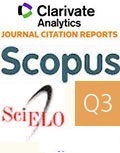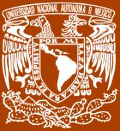|
Boletín de la Sociedad Geológica Mexicana Volumen 76, núm. 2, A210324, 2024 http://dx.doi.org/10.18268/BSGM2024v76n2a210324
|
 |
¿Qué contenían las vasijas Capacha? Un análisis exploratorio por medio de residuos químicos
What did the Capacha vessels contain? An exploratory analysis of chemical residue
Héctor Mizraim Zacarías Salcedo1,*, Agustín Ortiz Butrón2, Meztli Hernández Grajales 3,
Eliseo Francisco Padilla Gutiérrez 4
1 Escuela Nacional de Antropología e Historia (ENAH). Periférico Sur y Zapote s/n. Colonia Isidro Fabela, C.P. 14030, Tlalpan, CDMX, México.
2 Instituto de Investigaciones Antropológicas (IIA), Universidad Nacional Autónoma de México, Ciudad Universitaria, 04510 Coyoacán, CDMX, México.
3 Equip de Recerca Arqueològica i Arqueomètrica (ERAAUB), Facultat de Geografia i Història, Universitat de Barcelona. Carrer Montalegre, 6 08001 Barcelona, España.
4 Museo Nacional de Antropología (MNA). Avenida Paseo de la Reforma y Calzada Gandhi s/n, Chapultepec, Polanco, C.P. 11560, Miguel Hidalgo, CDMX, México.
* Autor para correspondencia:(H.M. Zacarías Salcedo) This email address is being protected from spambots. You need JavaScript enabled to view it.
Cómo citar este artículo:
Zacarías Salcedo, H.M., Ortiz Butrón, A., Hernández Grajales, M., Padilla Gutiérrez, E.F., 2024, ¿Qué contenían las vasijas Capacha? Un análisis exploratorio por medio de residuos químicos: Boletín de la Sociedad Geológica Mexicana, 76 (2), A210324. http://dx.doi.org/10.18268/BSGM2024v76n2a210324
Manuscrito recibido: 2 de Noviembre de 2023; manuscrito corregido: 12 de Marzo de 2024; manuscrito aceptado: 21 de Marzo de 2024.
ABSTRACT
The Capacha culture developed in the Colima Valley at the end of the Early Preclassic and beginning of the Middle Preclassic. This is one of the most enigmatic human groups of Western Mexico, because there are not known contexts beyond their funerary offerings, which are rich in ceramic materials. We conducted spot-test chemical residue analysis of 50 Capacha vessels of 11 different shapes, all of them recovered by Kelly in the 1960s and 1970s and kept in the National Museum of Anthropology in Mexico City. Results might be associated with diverse preparations of foodstuff rich in protein, according to the presence of protein residues. The archaeological context from where the vessels were obtained, the size, and the chemical residues suggested that some pieces might have been used to offer blood.
Keywords: Capacha, chemical residues, Spot tests, archeological pottery, Western Mexico, Preclassic, Colima.

